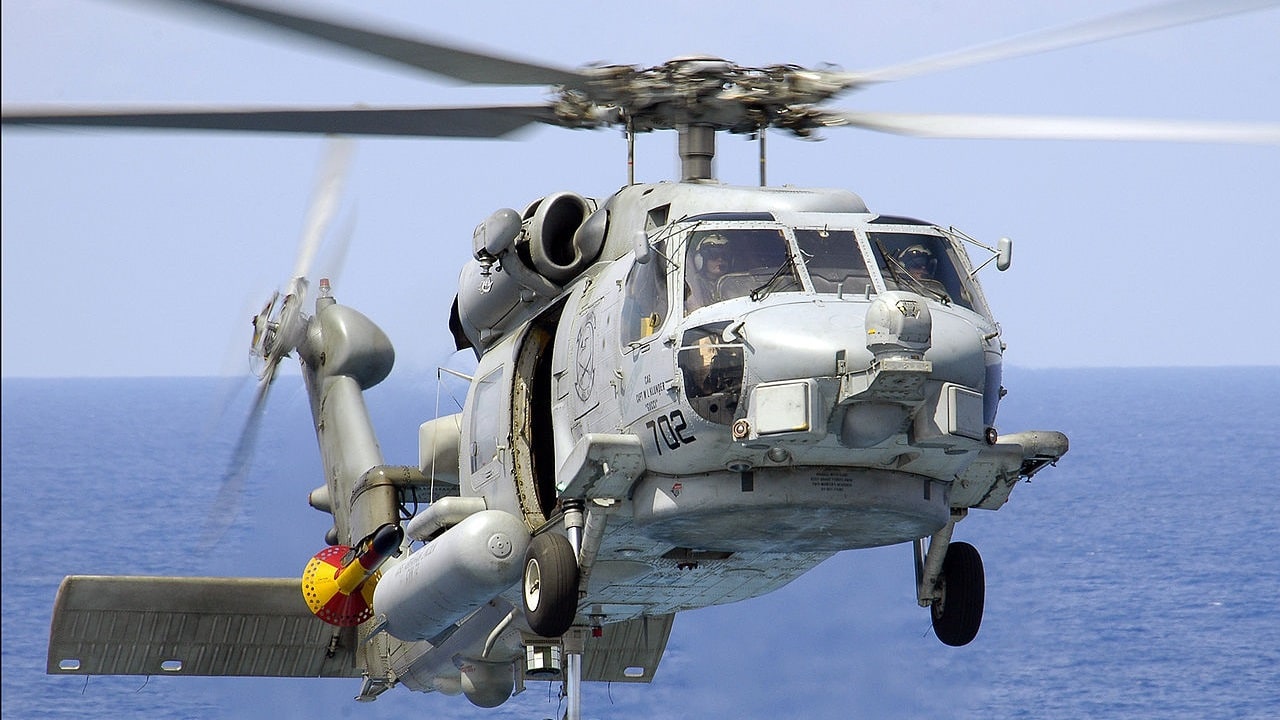Taiwan has cancelled plans to buy U.S. MH-60R Seahawk anti-submarine helicopters, that would have enhanced the island’s ability to destroy Chinese submarines.
Ostensibly, the reason is because the US$1.2 billion deal, which included 12 helicopters and support equipment, is too expensive. The deal was “too high and beyond our capability,” Defense Minister Chiu Kuo-cheng told Taiwan’s legislature.
But the Taiwanese government may also have been responding to U.S. complaints that the island needs fewer expensive weapons like tanks and helicopters – and more missiles and other simple, relatively cheap systems that can defeat a Chinese amphibious invasion.
Taiwan’s aging fleet of American-made 500MD and S-70C (an export version of Sikorsky’s MH-60 line) helicopters mostly date back to the 1970s and 1980s. The more advanced MH-60R, first deployed in 2005, is flown by the U.S. Navy, Australia, India and other nations. The MH-60R has a maximum speed of around 200 miles per hour, and a range of about 500 miles. Armed with Mk 46 or 54 torpedoes and Hellfire missiles, as well as dipping sonar, sonobuoys and radar, the latest Seahawks are a formidable threat to submarines and surface vessels.
The question isn’t whether Seahawks would be useful to Taiwan: China’s growing fleet of nuclear submarines jeopardizes the seaborne lines of communication that Taiwan would depend upon for reinforcement and resupply by its allies.
The issue is whether other weapons would be more useful given Taiwan’s strategic situation. Taiwan’s shopping list has included big-ticket items such as F-16 fighters, M1 Abrams tanks and M109A6 Paladin self-propelled howitzers. These are weapons made for mechanized warfare such as the Russia-Ukraine conflict.
But Taiwan is under perpetual threat of Chinese amphibious and airborne invasion that would enjoy massive fire support from ballistic missiles, aircraft, ships and special forces operations. World War II demonstrated that if an amphibious invader can get ashore in strength, the defender faces extreme difficulty in eliminating the beachhead, which becomes a base from which the attacker moves inland.
The best way to stop an amphibious invasion is to destroy the invaders in the water, before they have a chance to land. Against a Chinese amphibious fleet that must cross the 110 miles of the Taiwan Straits, mines and anti-ship missiles are more valuable than tanks.
That’s why the Biden administration is telling Taiwan to forget the helicopters and tanks, and spend its limited resources on asymmetric weapons that a weaker power can use to frustrate a stronger foe. That has been a strategy that has worked spectacularly for Ukraine, which has used cheap, man-portable anti-tank and anti-aircraft missiles to thwart Russia’s invasion.
Taiwanese leaders complain that the U.S. government is delaying delivery of weapons such as the Paladin, and the Stinger man-portable anti-aircraft missile. This may be because arms are being diverted to Ukraine, which is actually in a shooting war.
However, it’s also natural for nations to want flashy weapons such as jets and tanks. These have symbolic as well as military value, an advertisement that a country has the wealth and sophistication to buy and operate advanced military technology. But for Taiwan, the question is whether a symbol is more important than substance.
A seasoned defense and national security writer and expert, Michael Peck is a contributing writer for Forbes Magazine. His work has appeared in Foreign Policy Magazine, Defense News, The National Interest, and other publications. He can be found on Twitter and Linkedin.

